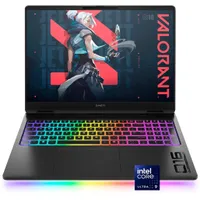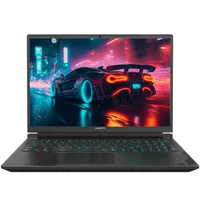Best laptops for engineering students in 2025: Our top picks tested and rated
These are the best laptops for engineering students we recommend
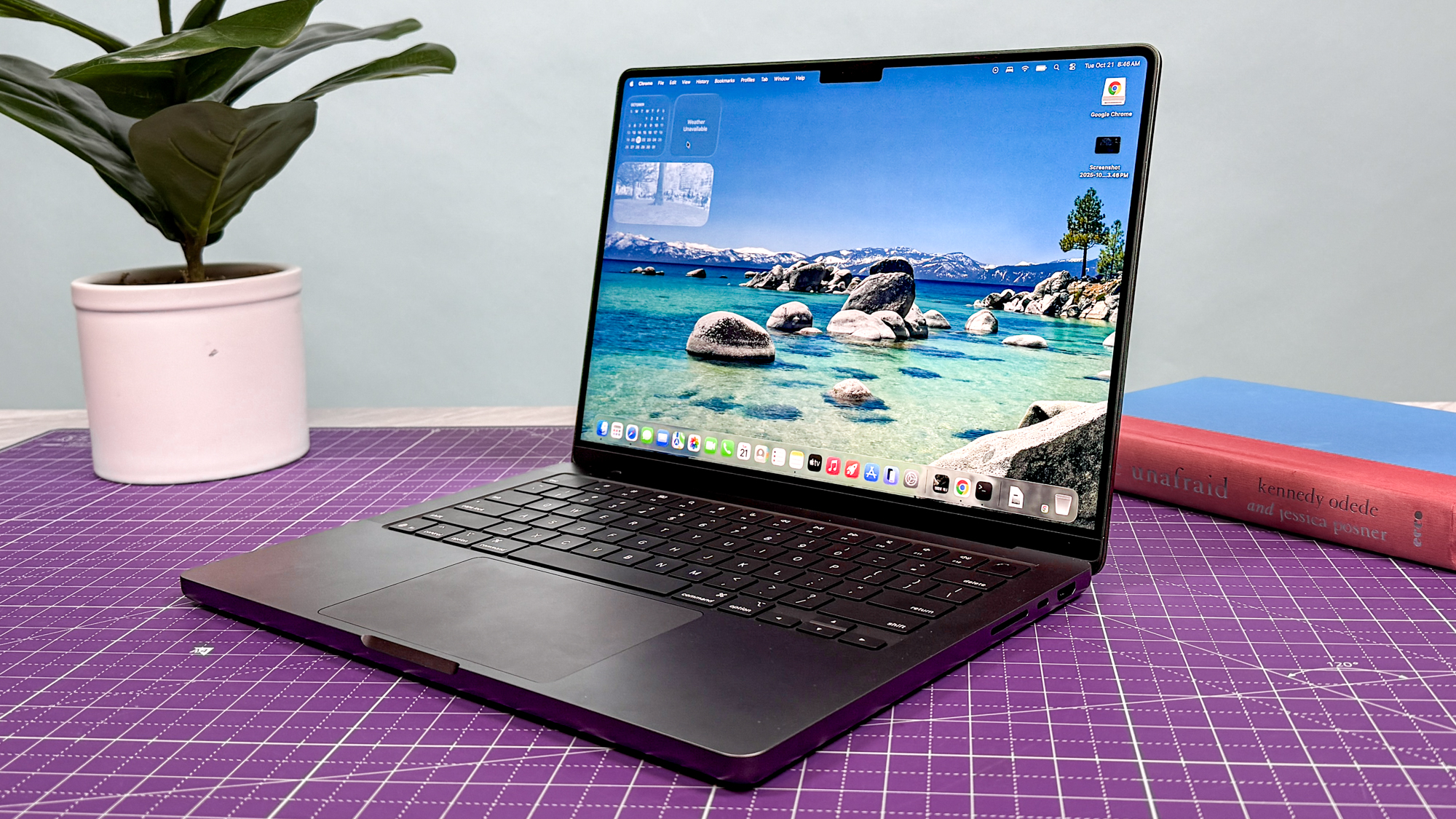
If you're an engineering student looking for the best laptop for your studies, three things are critical: a strong CPU for simulation, a powerful GPU for CAD work, and plenty of RAM for complex data analysis.
Finding the best mix of these traits in a well-priced laptop is hard, but that's where we come in — reviewing over 200 laptops a year to help point you in the right direction.
My top picks
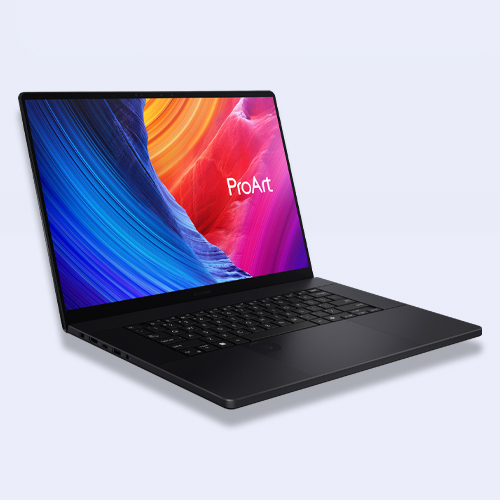
The Asus ProArt P16 is the best of all worlds for any engineering student — a gorgeous 4K OLED display up top for razor-sharp clarity, beefy AMD CPU for computation, a ton of RAM and an RTX 4070 for CAD work.
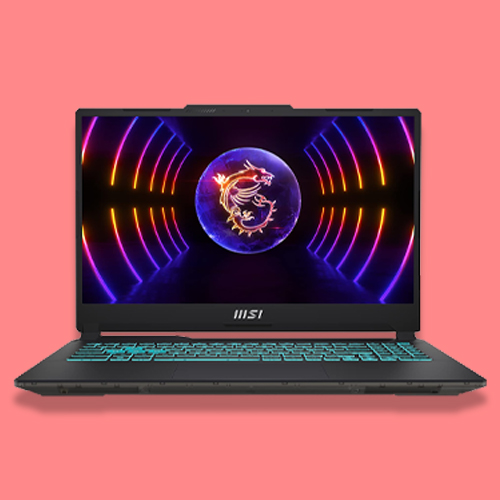
MSI Cyborg 15 is a pretty solid balance of decent components at a budget price. You won't get the blazing speed of something more expensive, but it'll definitely do the job at a low cost.
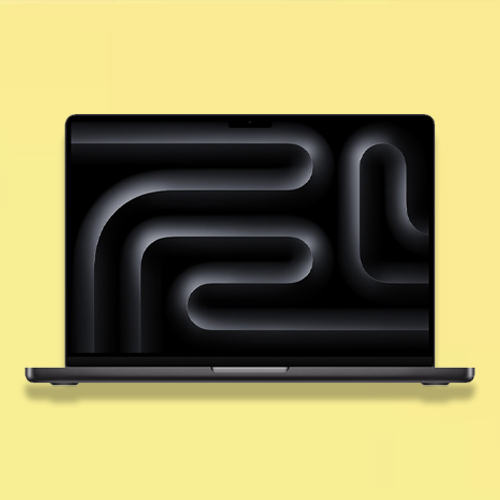
The updated MacBook Pro with M5 offers monstrous power, even with the base silicon. Not only is it more affordable than the M4 Pro, but it also catches up to the last-gen chip, meaning this mobile workstation is capable of handling AutoCAD and MATLAB with ease.
How do I decide which laptop is best for my engineering studies?
If you're running CAD or simulations, you need power and plenty of it: a strong combination of CPU, GPU and RAM. For that, I'd point you in the direction of the Asus ProArt P16 or the MacBook Pro M5 for an optimal balance.
However, I know these are pricey options, and if you're on a budget, the MSI Cyborg 15 is a solid shout for under $1,000.
If portability is critical, I'd nudge you towards the Asus ROG Zephyrus G14. But if all you care about is maximum performance for intense code compiling, simulations and data analysis, the Asus ROG Strix Scar 18 is a great "no expense spared" choice.
If you're looking for something more generalist — like if your engineering course is more essays than practical work — take a look at our best laptop for college list. If you need something more specialist, explore our hand-picked list of the best laptops for engineering below.
The best laptop overall
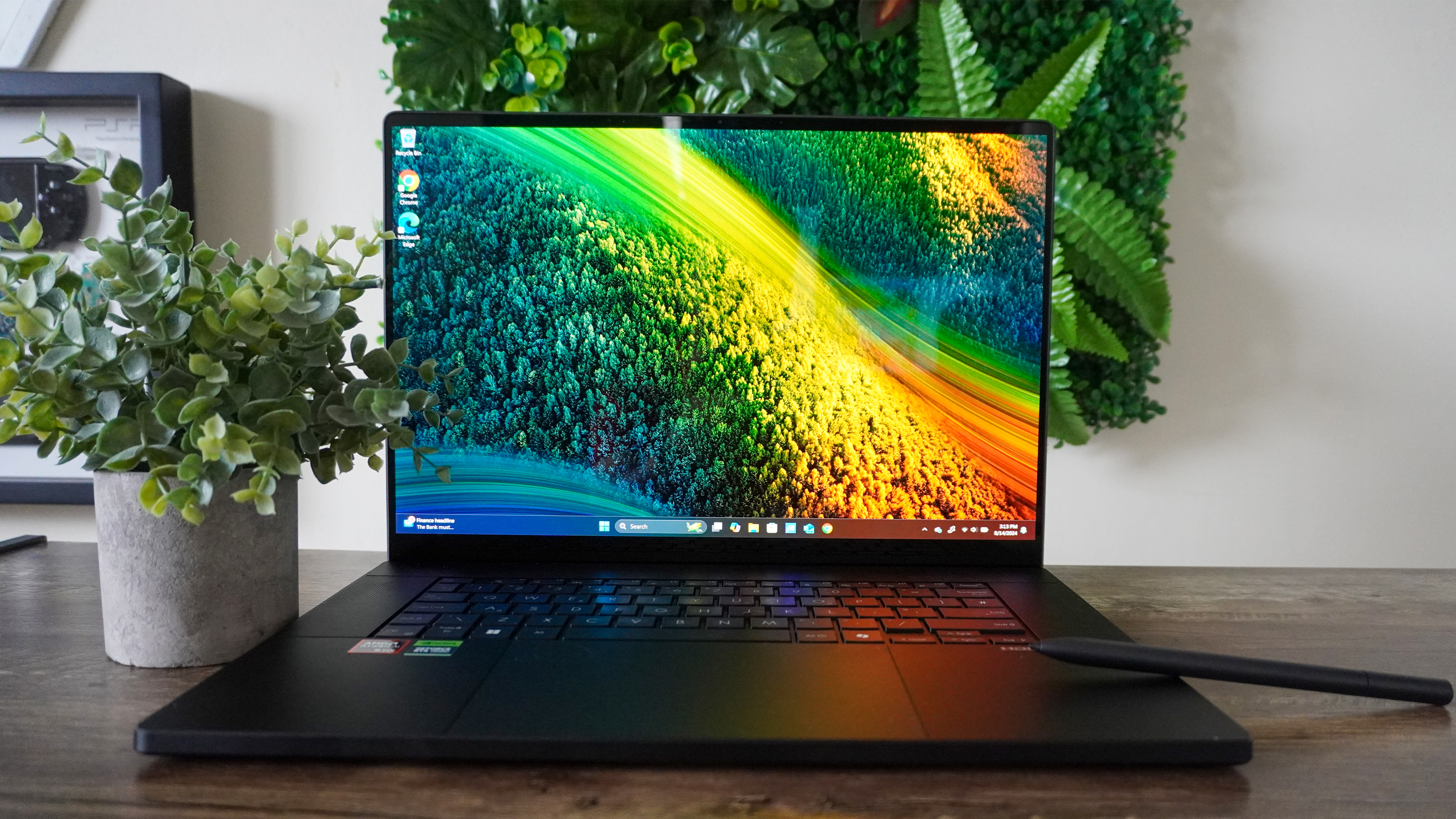
Specifications
Reasons to buy
Reasons to avoid
The Asus ProArt P16 is what I recommend most to engineering students because it strikes just the right balance between being powerful enough for engineering work, and portable enough to carry around school.
This Windows 11 laptop comes with a nice, bright 16-inch OLED touchscreen — making every piece of work you're on look simply mesmerizing. Plus, having the touchscreen gives you a nice alternative way to interact with the laptop when your hands are tired from jamming out assignments.
If you plan to do a lot of demanding coursework, that combination of Nvidia GeForce RTX 4070 and AMD Ryzen AI 9 HX 370 is perfect for design work and simulation, or even getting into programming and calculations. Plus a ton of RAM in here is great for those multitasking demands of that workload.
Oh, and for that work, the touchpad and keyboard combination feels great to use, from the tactility of each key to the satisfying oomph of that mouse click. Pack in a bunch of ports, and provided you're OK with middling battery life and a tendency for those fans to kick up a storm, and you'll love this.
Read our full Asus ProArt P16 review.
The best value option
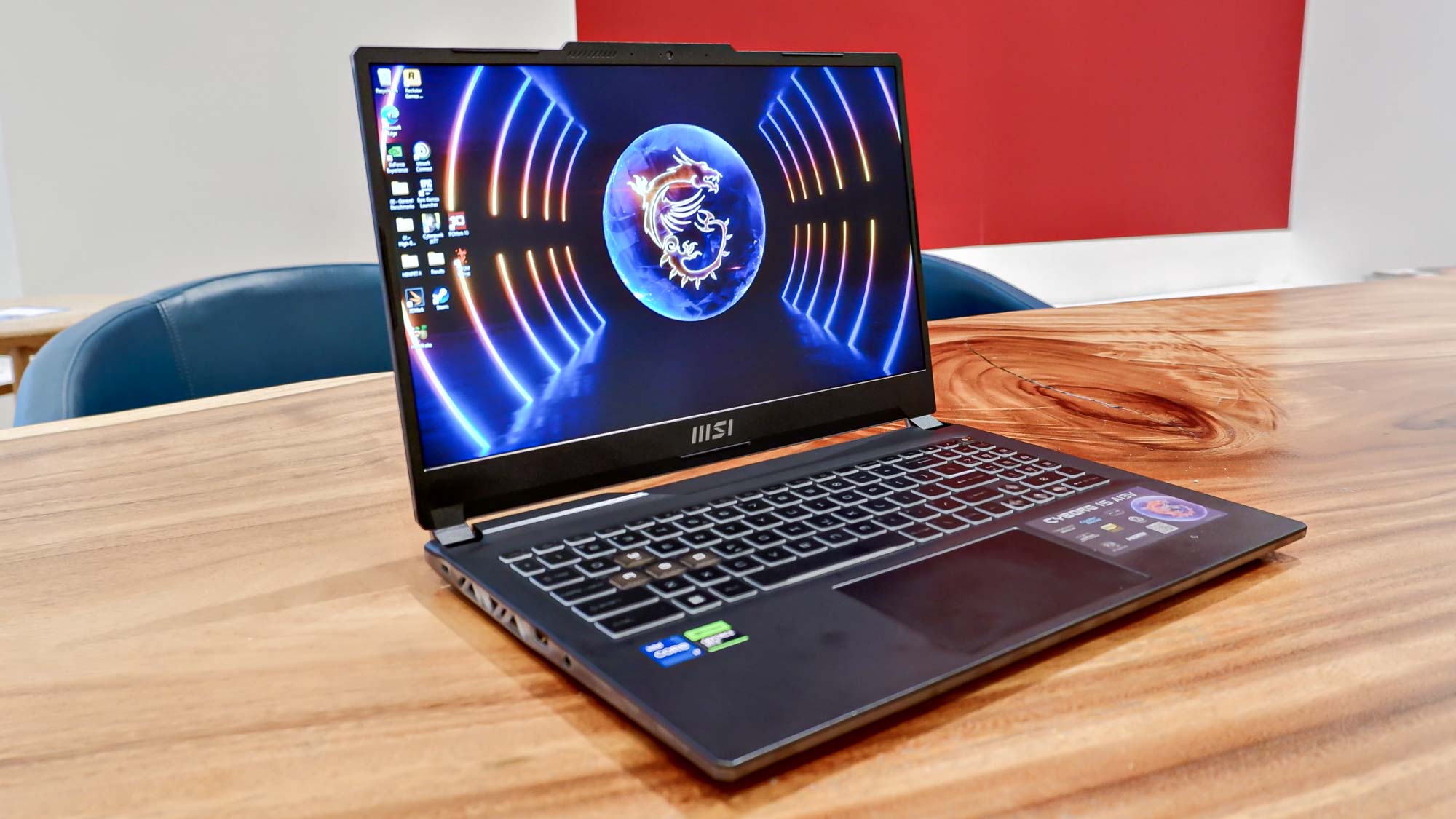
Specifications
Reasons to buy
Reasons to avoid
The MSI Cyborg 15 ($999) is a cyberpunk-inspired gaming laptop that won’t destroy your wallet. It might look a little out of place in your next lab session, but if you want a powerful laptop for not too much money this beast is hard to beat.
The model we reviewed most recently arrived sported a 13th Gen Intel Core CPU and an Nvidia RTX 4050 GPU, delivering solid gaming performance at an affordable price. But that power also makes this a great choice for students who want to use that gaming muscle for schoolwork.
And while the 15.6-inch 1080p display doesn't deliver amazing color quality or brightness, it's good enough for getting work done on and fast enough (at 144Hz) to be capable of keeping pace with high-speed games when your homework is done. Plus you get an HDMI out and an RJ-45 Ethernet jack in addition to the usual USB-A and USB-C ports, so you can easily hook this machine up to an external monitor and plug into wired Internet for maximum speed.
Of course, the 720p webcam will make you look horribly washed-out and the battery life (barely over 5 hours in our testing) is bad, but the same is true of basically all gaming laptops. What you get in return is a remarkable amount of computing power for your dollar, with some cool design to boot.
Read our full MSI Cyborg 15 review.
The most portable
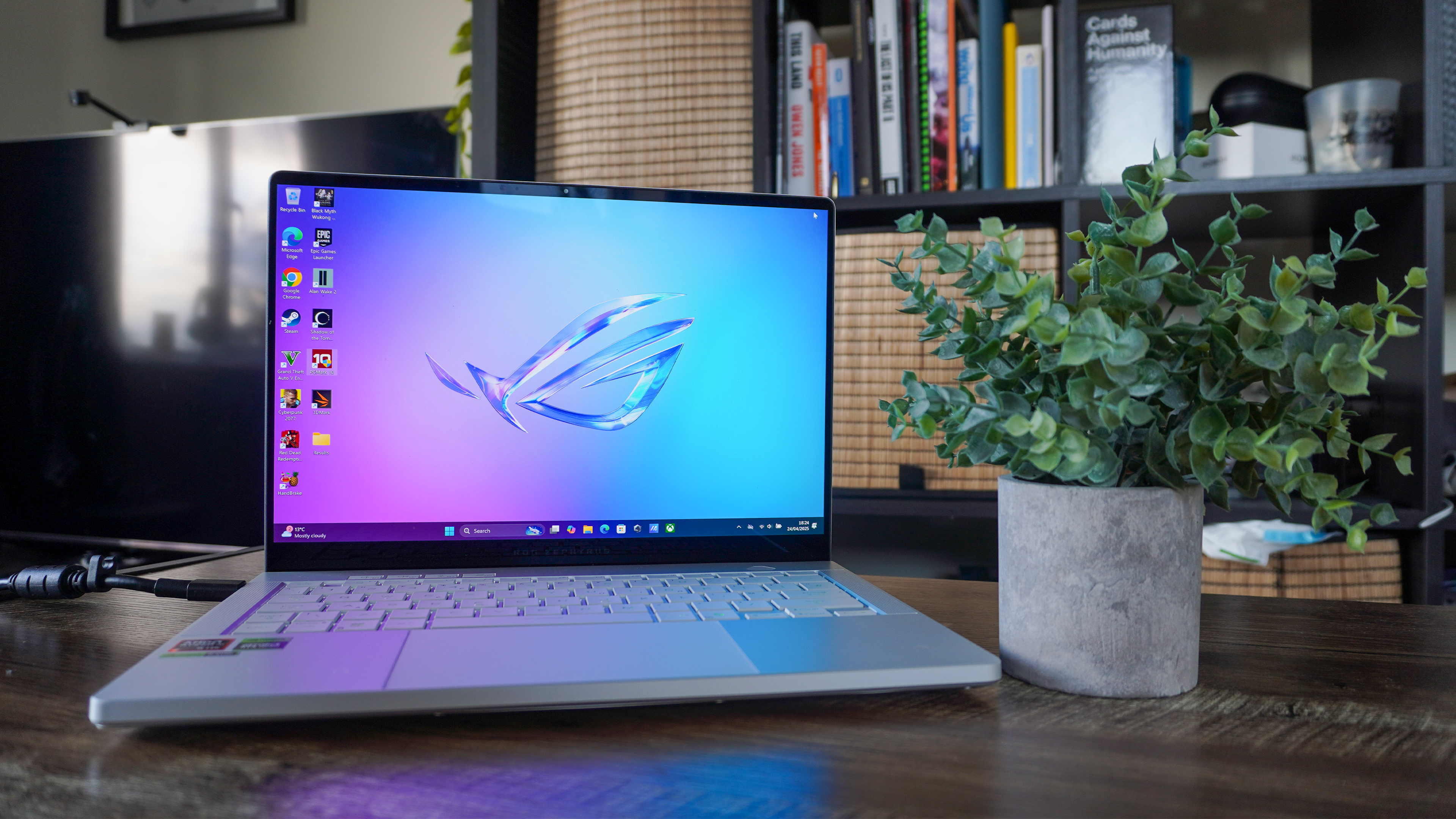

Specifications
Reasons to buy
Reasons to avoid
You'll regularly find the Asus ROG Zephyrus G14 at the top of our list of best gaming laptops, and the latest model sporting an RTX 50-series GPU is no different. Not only does its power under the hood make it an ideal choice for engineering students, but its also wonderfully portable.
Along with its AMD Ryzen AI 9 HX 370 CPU and the 64GB of RAM that came with our review unit, the Zephyrus G14 can chew through transcoding a 4K video down to 1080p in under 3 minutes, multiple Chrome tabs and apps, play high-intensive games at 120 FPS and more.
Being just 3.5 pounds, it's a great laptop to take around to class and blast through research or work. One problem is its battery life, which can last around 5-6 hours for daily tasks. That may decrease when using demanding, engineering-focused apps, so its worth taking its power brink with you for a quick charge between classes.
Regardless, as a laptop that offers all the key elements an engineering student needs (and for a long while to come), it's hard to go wrong with the Zephyrus G14. Oh, and its 14-inch (2880 x 1800) OLED display? Its a beauty.
Read our full Asus ROG Zephryus G14 (2025) review.
The best MacBook
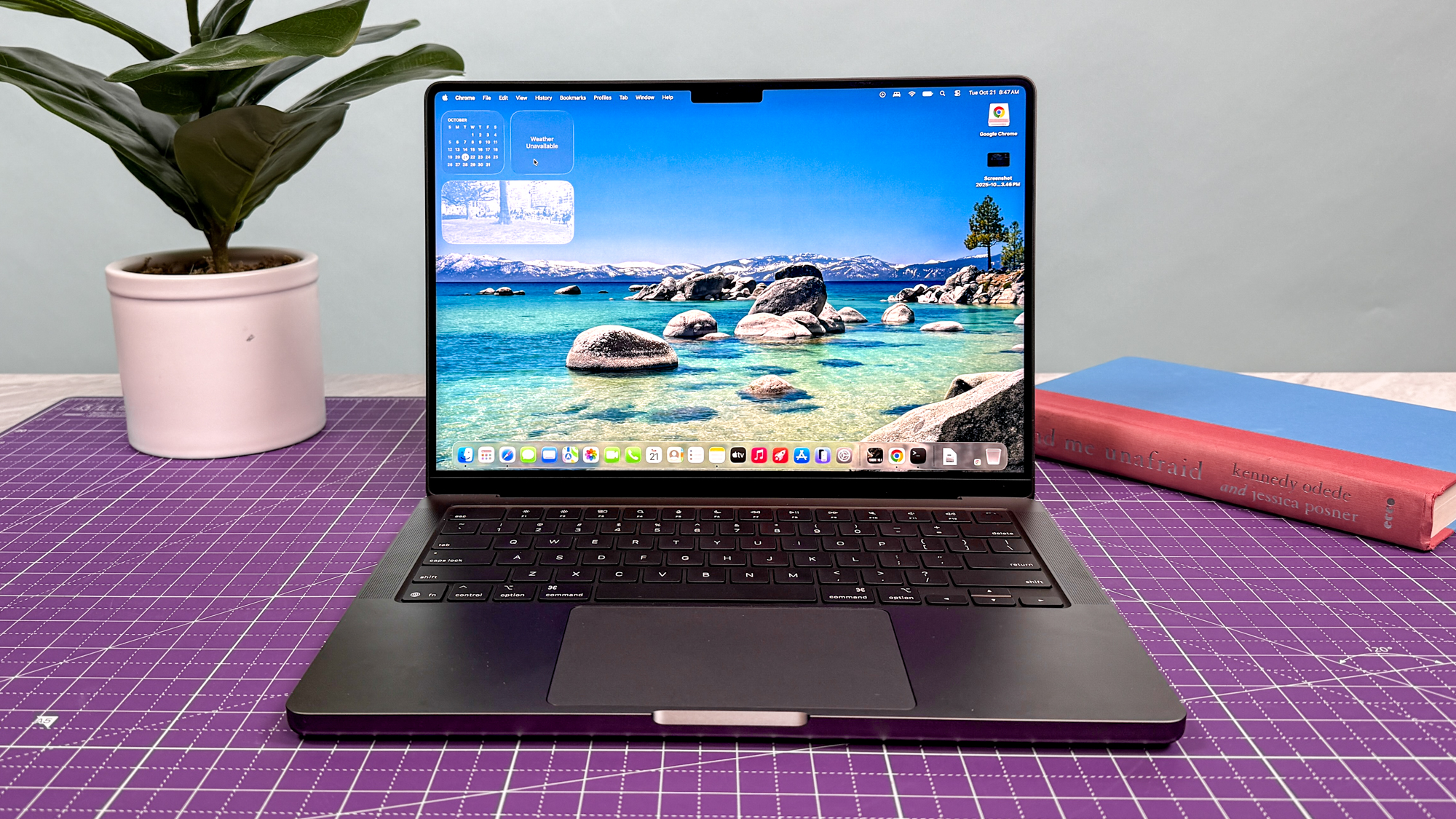

Specifications
Reasons to buy
Reasons to avoid
With the latest iteration of Apple's pro-level laptop, you'd think that the base model wouldn't offer much performance. But that's just not the case with the MacBook Pro M5, as even in our benchmark testing, the all-new silicon not only catches up to the M4 Pro model in multi-core results, but even beats it in single-core performance!
It's a serious powerhouse that can handle intense engineering work, and even with the base configuration, sporting a 10-core CPU and 10-core GPU, it's also way more affordable than the M4 Pro beast. And with up to 36GB of RAM, expect this machine to blaze through programs for simulation and analysis.
What's more, the GPU has been upgraded once again, so much so that AutoCAD can be used to easily power through drafting, design and modeling. This is a laptop, after all, so expect a sleek, lightweight machine that can last you a whole day of classes. As in, 18 hours of battery life.
Plus, that Mini-LED Liquid Retina XDR display offers precise color accuracy and impressive brightness. Otherwise, since it runs macOS, there are some engineering apps that are Windows-specific, so you will need to check on that before buying.
Apple nailed the laptop for power users once again with the MacBook Pro M5, and it's a fantastic shout for engineering students after a do-it-all machine.
Read our full MacBook Pro M5 review.
The best 2-in-1
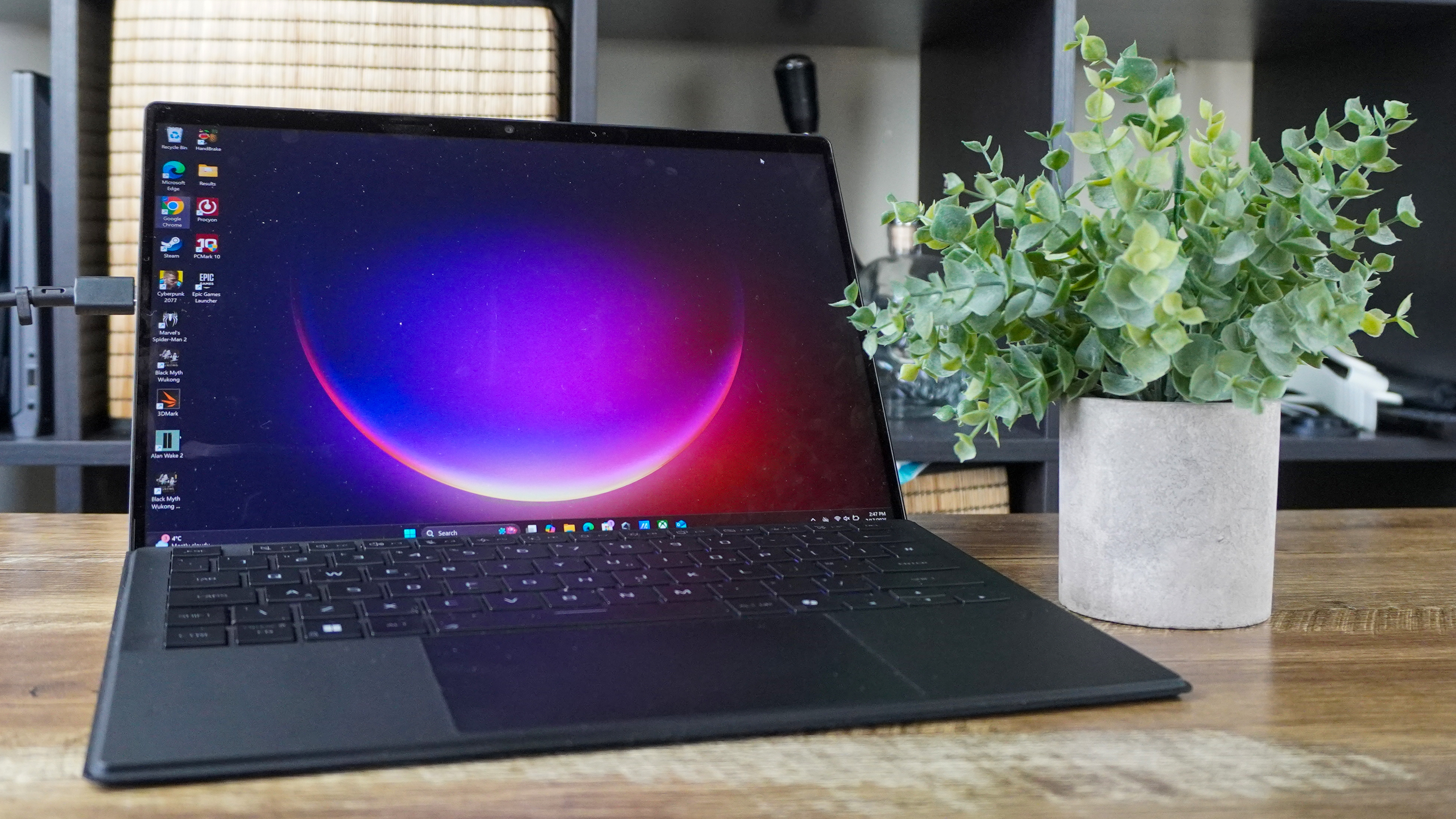

Specifications
Reasons to buy
Reasons to avoid
At first glance, the ASUS ROG Flow Z13 might seem like an odd choice for engineering students — a tablet-style 2-in-1 without a dedicated GPU? But don’t be fooled by its slim Surface Pro-like design. After a month of testing, it proved to be a seriously capable mobile workstation.
The secret lies in AMD’s Ryzen AI Max 390 chip. Even as the lower-end variant, its integrated graphics deliver performance comparable to an RTX 4060 (without ray tracing), making it ideal for running CAD tools, 3D modeling software, and simulation platforms like SolidWorks, ANSYS, or MATLAB.
Because the APU shares memory with the system RAM, the 32GB model effectively gives the GPU up to 24GB of VRAM — far more than most mid-range dedicated GPUs. Upgrade to the Ryzen AI Max+ 395 with up to 128GB of RAM, and this machine can easily handle large datasets, FEA simulations, and demanding multitasking.
Battery life is another big win. With no power-hungry discrete GPU, the Flow Z13 delivers strong endurance for all-day use on campus. It's pricey at over $2,000, but if you're after serious power in an ultra-portable form factor, this could be the ideal laptop for engineering students who need both mobility and muscle.
Read our full Asus ROG Flow Z13 review.
The best premium
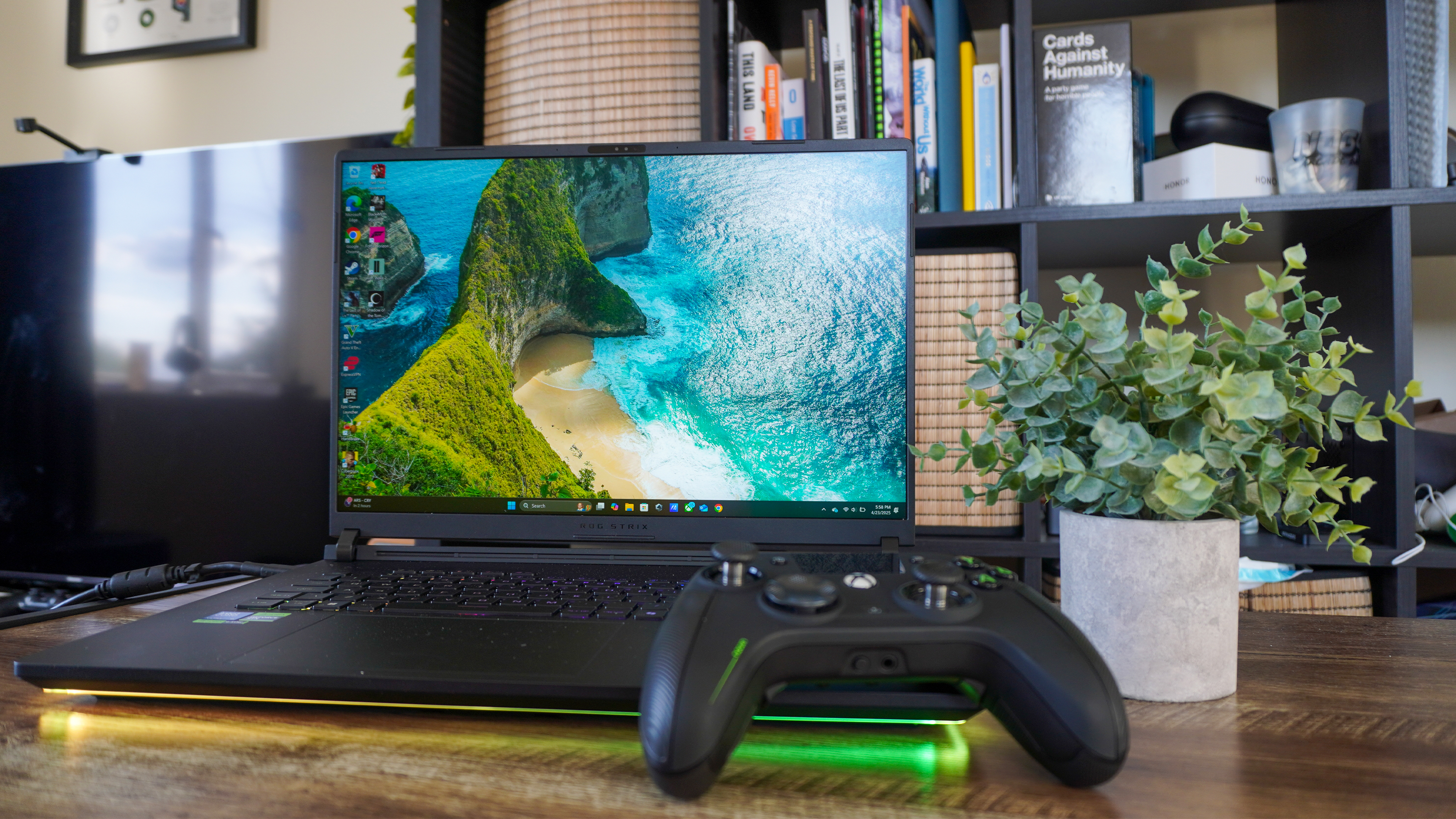

Specifications
Reasons to buy
Reasons to avoid
The Asus ROG Strix Scar 18 is the most powerful laptop we've tested, and while it comes with a gamer-centric aesthetic, it offers more than enough power for engineering students looking for a machine that can do it all — but it will cost you a premium.
This is the ideal laptop for those after more of a desktop replacement rather than a more portable laptop to easily take to classes. Although, while 7.3 pounds isn't exactly lightweight, its still lighter than other laptops in its class, like the Alienware m18 at over 9 pounds.
Its 18-inch 4K Mini-LED display with a 240Hz refresh rate offers a lot of screen real estate to work in CAD, finishing up homework in documents and, of course, play games. Although, this is also what makes it better on a desk than in classes, as it is a chunky laptop.
Otherwise, you can expect plenty of ports and great cooling for its internals, with the latter meaning in can manage demanding tasks without getting too hot under the hood.
This is a laptop that will take you through your course and more years to come, but you'll be paying a lot for a machine like this. While I recommend other laptops that are more portable for classes and ones that won't put a dent in your wallet, this is an option for those who have been saving up for a premium laptop for their engineering career. Just keep note that as a gaming laptop, its battery won't last very long — so always keep its power brick handy.
Read our full Asus ROG Strix Scar 18 review.
Also tested
Since we test and benchmark dozens of laptops every year, there are many machines that can be up for the task of being an engineering student's companion throughout their course. However, they can't all make this list.
That doesn't mean they aren't worth recommending, especially if they're at the right price and offer something the best don't. Check out the laptops we've tested and see if it suits your fancy.
HP Omen Max 16 (★★★★☆½)
Despite the HP Omen Max 16 gaining top scores due to its incredible RTX 5090 performance and vivid 16-inch OLED display, its weight, price and short battery life aren't the best mix for engineering students. That doesn't mean it's a laptop that isn't worth recommending. On the contrary, its sleek design and cooling are superb, but you'll want to save a lot for a laptop like this.
Read our full HP Omen Max 16 review.
Gigabyte G6X (★★★☆☆)
The Gigabyte G6X is a decent gaming laptop that delivers good performance thanks to its RTX 4060 on board, especially for its sub-$1,000 price. However, the Intel CPU is outdated and the cheap, plasticky keyboard and shell combine with poor display quality to make this laptop for engineering students feel cheap in bad ways.
Read the full Gigabyte G6X review.
Battery benchmarks: comparison
Battery life is a key concern for students since you don't want a laptop to die in the middle of class. With that in mind, we've collected all the results from our battery tests of these laptops, and I've organized them below in a list that's easy to peruse.
As you can see, the MacBook Pro M5 is the current clear winner of terms of long battery life at over 18 hours. However, a fair number of laptops on this list will last you around 8 hours on a full charge, which should be enough to get you through a day of classes.
Unfortunately, as you can see from our testing, gaming laptops typically have terrible battery life, and no gaming laptop on this list will actually last you through a full 8-hour day at school without plugging in.
Laptop | Battery life (tested) |
MacBook Pro (M5) | 18:14 |
Asus ROG Strix Scar 18 (2025) | 4:30 |
Asus ROG Zephyrus G14 (2025) | 5:45 |
Asus ProArt P16 | 9:36 |
Asus ROG Flow Z13 | 10:14 |
MSI Cyborg 15 | 5:05 |
Performance benchmarks: comparison
To help you get a better sense of which laptops perform better, I've also included a table of all the results from these laptops in our CPU benchmark tests.
For these tests we run the Geekbench single-core CPU and multi-core CPU tests and report the scores for each. By comparing these scores and seeing which is higher, you can get a general sense of which is more capable.
As you can see from the results below, the Alienware m18 is the clear performance leader on this list. However, even a cheap gaming laptop like the MSI Cyborg 15 can put up decent numbers in terms of raw performance.
Laptop | Geekbench single-core test | Geekbench multi-core test |
Asus ROG Strix Scar 18 (2025) | 3,117 | 19,553 |
Asus ROG Zephyrus G14 (2025) | 2,929 | 15,280 |
MacBook Pro (M5) | 4,288 | 17,926 |
Asus ROG Flow Z13 | 2,995 | 19,457 |
MSI Cyborg 15 | 1,837 | 10,614 |
How to choose the best engineering laptop for you
Performance: If you're going to be spending years studying engineering, you're going to need a computer with enough power to handle anything your teachers throw at you. We recommend at least a new mid-range CPU (Intel Core Ultra or AMD Ryzen 7) and at least 16 GB of RAM, though if you can afford to spend more on on a laptop with better specs it will pay off in the long run.
Graphics and gaming: Most gaming laptops come with discrete graphics cards so they can run the latest games well, but the same card can be equally vital to engineering students who will be using CAD (computer-assisted design) and 3D analysis programs. These kinds of applications really benefit from the power of a good GPU, so if you're expecting to do any graphics or 3D work it's a good idea to invest in a laptop with a discrete Nvidia or AMD graphics card.
Operating system: Laptops typically come in three flavors: Windows (most mainstream PCs), macOS (MacBooks) and Chrome OS (Chromebooks). Chrome OS isn't good for much besides web surfing, file management, and light computing, so a Chromebook isn't a great choice for serious schoolwork. However, a crafty student could install Linux on a high-powered Chromebook to turn it into a decent laptop for engineering work.
Many engineering students spend a lot of time working with specialized or self-developed software, so Windows is often preferable over macOS because it throws up fewer roadblocks when using such tools. However, even Windows can sometimes get in the way of serious engineering work, which is why many engineering students get MacBooks or Windows laptops and install Linux on them so they can dual-boot into whatever operating system works best for their needs.
As mentioned above, when making your buying decision be sure to consult your teachers and/or the engineering department at your school for more specific advice on what you'll need for your studies. Whichever system you decide on, it's a good idea to pair it with the best mouse for your particular work situation.
How we tested these laptops for engineering students
To find the best laptops for engineering students we run every laptop through a rigorous suite of benchmarks and real-world tests to gauge how it will perform during everyday use.
We measure the average brightness and color quality of each laptop's display using our in-house light meter and colorimeter. For general performance, we run our machines through tests that include Geekbench 6 (CPU performance), as well as machine learning performance via Geekbench AI tests — essential for the on-device AI tasks that some of these engineering apps are requiring.
Plus, we run the graphics benchmark tests in the likes of CrossMark and 3DMark. A strong GPU is needed for CAD work, and these are a great way to measure that.
For more information on our testing process, check out our guide to how we test.

I'm Darragh, and I cover a wide variety of categories when it comes to laptops. While I haven't been an engineering student myself, I know the power it takes in a laptop for it to be worth considering for the type of demanding CAD and 3D apps engineers will be using. I'm always checking out powerful, top-of-the-line machines that handle great under pressure, and those are the ones that should be on engineering students' radar.
Get instant access to breaking news, the hottest reviews, great deals and helpful tips.

Darragh is Tom’s Guide’s Computing Editor and is fascinated by all things bizarre in tech. His work can be seen in Laptop Mag, Mashable, Android Police, Shortlist Dubai, Proton, theBit.nz, ReviewsFire and more. When he's not checking out the latest devices and all things computing, he can be found going for dreaded long runs, watching terrible shark movies and trying to find time to game
